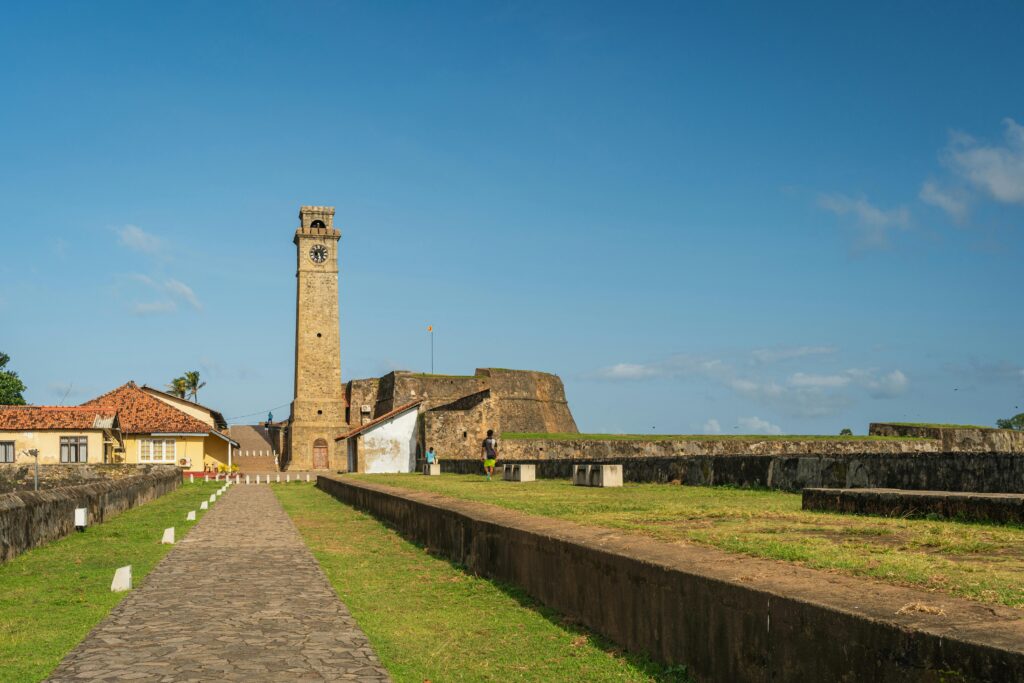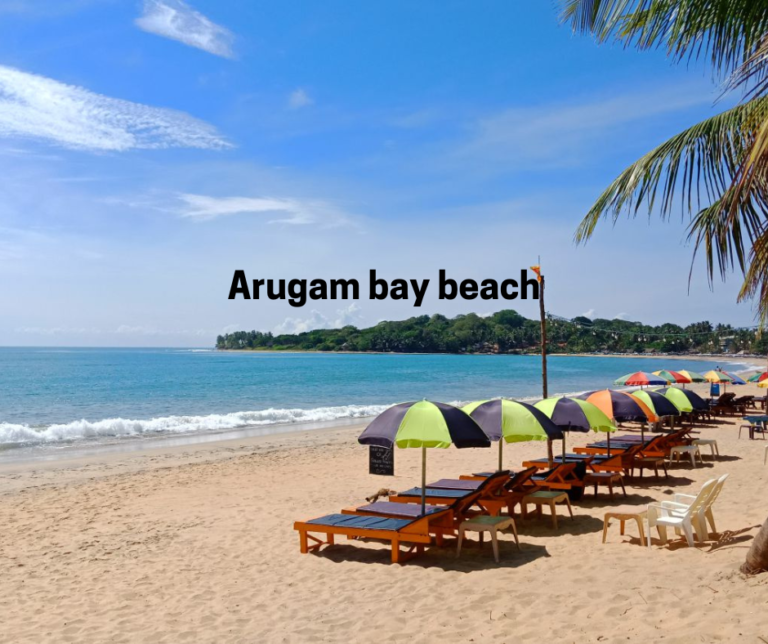Exploring Galle: A Journey Through Sri Lanka’s Historic Gem

Situated on the southwestern tip of Sri Lanka, Galle is a metropolis that seamlessly blends natural beauty, culture, and history. Galle, a city known for its idyllic beaches, historic significance, and breathtaking colonial architecture, provides an experience that encapsulates the essence of Sri Lanka. Galle has something to offer for everyone, whether you are a history enthusiast, a beach enthusiast, or an individual seeking to immerse themselves in the city’s rich cultural heritage.
A Brief History of Galle
Galle’s history extends back thousands of years, with records indicating that it was an important harbor as early as the thirteenth century. Galle was already a prominent commerce city before the Portuguese occupied Sri Lanka, with Chinese, Persians, Arabs, and Greeks all visiting. Its strategic location on the historic spice trade route made it a vital hub for trade and cultural interaction.
The Portuguese’s arrival in 1505 marked the beginning of European colonization in the city. They built the initial walls surrounding Galle, but it was the Dutch who took control in 1640 and left an indelible mark on the city. The Dutch expanded the walls, transforming Galle into the fortified city we know today. The British took over in 1796, but Dutch architecture remained prominent.
Galle Fort: A UNESCO World Heritage Site

The Galle Fort, located in the heart of Galle, is one of Asia’s best-preserved colonial forts. The fort, designated a UNESCO World Heritage Site in 1988, remains a testimony to the rich history and architectural splendor of the Dutch colonial era. This vast 52-hectare building, enclosed by massive stone walls, faces the Indian Ocean and combines European architectural forms with South Asian customs.
Walking through the cobblestone walkways of Galle Fort is like going back in time. Dutch-style homes, ancient churches, and small shops selling everything from antiques to artisanal products line the narrow alleys. The fort’s walls provide panoramic views of the ocean, while inside, visitors can discover a variety of historical landmarks.
- Dutch Reformed Church: Constructed in 1755, this historic church features Dutch architecture and stands as one of Sri Lanka’s oldest Protestant churches. It has gravestones embedded in the floor, as well as an elegantly constructed pulpit and furniture.
- The Galle Lighthouse, which stands tall within the fort walls, is one of Sri Lanka’s oldest. Built by the British in 1939, it is an ideal location to watch the sunset over the Indian Ocean.
- Old Dutch Hospital: Originally a hospital during colonial times, it is today a cluster of cafes, restaurants, and boutique boutiques. Its sea-facing location makes it an ideal place to unwind and enjoy the views.
- The nautical archaeology museum, located within the fort, celebrates Galle’s rich nautical past by displaying objects found in shipwrecks, some of which date back centuries.
Cultural Blend and Heritage
Galle is notable for its diverse cultural heritage. Galle, as a significant seaport, has long served as a cultural melting pot. Architecture, gastronomy, and local customs all reflect the impact of European, Arab, and South Asian civilizations. Not only does the architecture preserve this cosmopolitan heritage, but the diverse communities still call the fort home.
Walking through Galle, you’ll see a mix of colonial-era architecture and active local life. In recent years, art galleries, pleasant cafes, and boutiques have opened, giving the historic walls a modern twist. The impact of international visitors and expats has resulted in a distinct combination of old and contemporary, making Galle a cultural hub in Sri Lanka.
Beaches of Galle

While Galle is famous for its historical significance, its beaches are as appealing. The stretch of coastline surrounding Galle has some of the nicest beaches in the country, making it a popular destination for sunbathers and beachgoers.
- Unawatuna Beach: Located just a few kilometers from Galle, Unawatuna is one of Sri Lanka’s most popular beaches. With its golden sands, calm waves, and coral reefs, it’s an excellent location for swimming, snorkeling, and diving. Unawatuna also has a busy nightlife, with beach clubs and restaurants dotting the shoreline.
- Jungle Beach: This private beach in Rumassala is ideal for those looking for a quieter and more intimate setting. Rich foliage surrounds the beach, offering a sense of seclusion from the busier tourist areas.
- Dalawella Beach, known for its renowned rope swing and crystal-clear waves, is another must-see destination near Galle. It’s an excellent location for shooting scenic images and watching sea turtles swim near the coast.
- Hikkaduwa Beach is a popular surfing and diving destination, located just a short drive from Galle. The coral sanctuary is one of the best sites to see marine life, such as bright tropical fish, turtles, and vibrant corals.
Galle’s Vibrant Food Scene
Galle’s food scene is just as diverse as its culture. The city has a diverse selection of dining options, from native Sri Lankan food to worldwide gourmet fare. The combination of locally sourced products, seafood, and spices results in a flavorful culinary experience that reflects the city’s eclectic background.
- Sri Lankan Curry and Rice: One of Galle’s most popular dishes, this dinner consists of various curries served with rice, lentils, and sambols (hot relishes). Seafood curries, cooked with fresh local fish or prawns, are especially tasty.
- Street Food: For a more relaxed experience, Galle’s street food booths serve delicious treats like Kottu Roti (a stir-fried meal with chopped roti, veggies, and meat), Hoppers (bowl-shaped pancakes made from rice flour), and Samosas (fried pastries filled with meat or vegetables).
- Seafood Delights: Galle, a seaside city, is known for its seafood. From fresh fish to crabs and prawns, seafood fans will have plenty of alternatives at beachfront restaurants. Grilled fish, shrimp curry, and crab dishes are also popular.
- International Cuisine: Because of its cosmopolitan background, Galle has a variety of international dining options, including Italian, French, and Asian cuisine. Many restaurants within Galle Fort serve fusion cuisine that combines local ingredients with worldwide culinary skills.
Exploring the Surrounding Area

Galle is a treasure trove of history and beauty, but its surroundings are just as wonderful. The Galle region has several attractions for those wishing to discover more of Sri Lanka’s natural and cultural marvels.
- Madu River Safari: The Madu River, located around an hour north of Galle, is a biodiversity hotspot. A river safari leads you through mangrove forests, little islands, and tranquil lagoons. The area is home to a variety of birds, reptiles, and fish.
- Handunugoda Tea Farm: This tea farm, located a short drive from Galle, is unique in that it produces the world-famous “Virgin White Tea.” A tour of the plantation provides an insight into Sri Lanka’s tea industry and the careful process of producing high-quality teas.
- Rumassala: This hill, located just outside Galle, provides a breathtaking view of the coastline and houses the Japanese Peace Pagoda. It’s an excellent location for a tranquil walk or meditation, with breathtaking ocean views.
- Koggala Lake, located south of Galle, is famed for its peaceful waters and numerous small islands, including Madol Duwa, which is famous in Sri Lankan literature. Boat trips are a popular method to explore the lake and its islets, which include bird sanctuaries and cinnamon plantations.
Galle’s Role in Sri Lanka’s Modern Tourism
Galle has undergone a transformation from a historical seaport to one of the most frequently visited tourist destinations in Sri Lanka. It draws a diverse range of travelers, including luxury travelers, nomads, and history enthusiasts. The ideal destination for those seeking to experience the diverse offerings of Sri Lanka is the country’s colonial elegance, stunning beaches, and rich cultural heritage.
In recent years, Galle has become a favored destination for boutique hotels and guesthouses, with a significant number of these establishments located in restored colonial structures. In addition to offering a comfortable base for visitors to explore the city and its environs, these accommodations offer a distinctive combination of modern luxury and historic charm.
Festivals and Events in Galle
Galle is also the site of numerous festivals and events that commemorate its rich cultural and artistic heritage. The most notable of these is the annual Galle Literary Festival. Writers, poets, and literary enthusiasts from all over the globe convene for this esteemed event. It provides an opportunity to participate in seminars, discussions, and readings in the distinctive environment of Galle Fort.
The Galle Music Festival is another significant event that honors both Sri Lankan and international music. This event features a diverse selection of musical genres, including traditional folk music and contemporary performances.
Conclusion
The city of Galle is characterized by the harmonious coexistence of the past and the present. It is an essential destination for all travelers to Sri Lanka due to its pristine beaches, vibrant culture, colonial architecture, and historic fort. Galle provides a rich and satisfying experience that lingers long after you depart, whether you are strolling through the cobblestone streets of Galle Fort, relaxing on the nearby beaches, or indulging in the local cuisine. Galle is a must-visit destination for travelers who wish to explore the history, culture, and natural grandeur of Sri Lanka.






